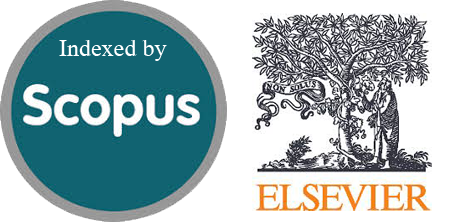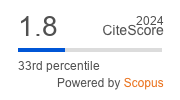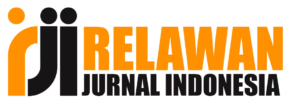Implementing Agile Scrum Methodology in The Development of SICITRA Mobile Application
Abstract
Software development management system is important in application development. A proper software development management system will create a team that can adapt to system requirements and changes during application development. Various software development management systems are developed and widely implemented in software development, one of which is Agile Scrum. This study aims to implement well-documented Scrum for end-to-end application development, including the development of servers and mobile applications that we develop. We developed a bus application called SICITRA, with the main feature of being able to help passengers share their travel information with those closest to them. Scrum is used because it has agility which can make application development faster and more organized, and there is a close relationship between everyone involved in the project. The results of this study are that by using well-documented Scrum, we can make it easier to track progress, become a guide during system development, become history and evaluate Scrum implementation during development.
Downloads
References
Z. A. Haqie, R. E. Nadiah, and O. P. Ariyani, “Inovasi Pelayanan Publik Suroboyo Bis Di Kota Surabaya,” JPSI (Journal Public Sect. Innov., vol. 5, no. 1, p. 23, 2020, doi: 10.26740/jpsi.v5n1.p23-30.
H. L. Hendric, S. Warnars, and I. Herawati, “Mobile Application For Tracking Angkot And Metromini As Public Transportation In Jakarta,” Int. J. Sci. Technol. Res., vol. 9, no. November, p. 2, 2020, [Online]. Available: www.ijstr.org.
R. S. Krishnan, S. Manikandan, J. R. F. Raj, K. L. Narayanan, and Y. H. Robinson, “Android application based smart bus transportation system for pandemic situations,” Proc. 3rd Int. Conf. Intell. Commun. Technol. Virtual Mob. Networks, ICICV 2021, no. Icicv, pp. 938–942, 2021, doi: 10.1109/ICICV50876.2021.9388625.
W. Wongthai, S. Khruahong, P. Srithong, and M. Samphao-Ngoen, “The Development of an Internet of Things Mobile Application for Tracking an Electric Bus in A Campus,” ECTI DAMT-NCON 2019 - 4th Int. Conf. Digit. Arts, Media Technol. 2nd ECTI North. Sect. Conf. Electr. Electron. Comput. Telecommun. Eng., pp. 220–224, 2019, doi: 10.1109/ECTI-NCON.2019.8692244.
B. Lillandt and S. Ilves, “A Mobile Application for Public Transport - How Can Gamification be Used to Promote the Use of Electric Buses for A Sustainable Future,” 2014.
N. W. Hidayah, R. R. Sasmita, M. K. Mayangsari, O. G. W. Kusuma, H. Rante, and A. Fariza, “Invitin Project: Scrum Framework Implementation in a Software Development Project Management,” INTEK J. Penelit., vol. 9, no. 1, p. 58, 2022, doi: 10.31963/intek.v9i1.3332.
V. Upadrista, “Agile Methodology,” Art Consult. Sell. IT, no. Cpt 305, pp. 99–106, 2015, doi: 10.1201/b18065-15.
K. Schwaber and J. Sutherland, “The Scrum Guide,” Softw. 30 Days, pp. 133–152, 2015, doi: 10.1002/9781119203278.app2.
I. Tahyudin and Zidni Iman Sholihati, “Pengembangan Aplikasi Tiga-Tingkat Menggunakan Metode Scrum pada Aplikasi Presensi Karyawan Glints Academy,” J. RESTI (Rekayasa Sist. dan Teknol. Informasi), vol. 6, no. 1, pp. 169–176, 2022, doi: 10.29207/resti.v6i1.3793.
M. H. Wijaya and M. A. I. Pakereng, “Perancangan Aplikasi E-Ticketing Pada Agen Bus Berbasis Website Menggunakan Laravel,” JATISI (Jurnal Tek. Inform. dan Sist. Informasi), vol. 8, no. 3, pp. 1384–1396, 2021, doi: 10.35957/jatisi.v8i3.974.
R. A. S and M. Shalahuddin, “Rekayasa Perangkat Lunak Terstruktur dan Berorientasi Objek.” Informatika, Bandung, pp. 28–31, 2015.
F. Hayat, A. U. Rehman, K. S. Arif, K. Wahab, and M. Abbas, “The Influence of Agile Methodology (Scrum) on Software Project Management,” Proc. - 20th IEEE/ACIS Int. Conf. Softw. Eng. Artif. Intell. Netw. Parallel/Distributed Comput. SNPD 2019, pp. 145–149, 2019, doi: 10.1109/SNPD.2019.8935813.
H. Hutrianto and A. Putra, “Implementasi Scrum Model Dalam Pengembangan Aplikasi Pelaporan Sampah sebagai Wujud Smart Cleaning,” JIPI (Jurnal Ilm. Penelit. dan Pembelajaran Inform., vol. 5, no. 1, p. 9, 2020, doi: 10.29100/jipi.v5i1.1552.
M. Hron and N. Obwegeser, “Scrum in Practice: An Overview of Scrum Adaptations,” Proc. Annu. Hawaii Int. Conf. Syst. Sci., vol. 2018-Janua, pp. 5445–5454, 2018, doi: 10.24251/hicss.2018.679.
E. L. Cano, J. M. García-Camús, J. Garzás, J. M. Moguerza, and N. N. Sánchez, “A Scrum-based Framework for New Product Development in the Non-software Industry,” J. Eng. Technol. Manag. - JET-M, vol. 61, no. July 2017, 2021, doi: 10.1016/j.jengtecman.2021.101634.
B. Grebić and A. Stojanović, “Application of the Scrum Framework on Projects in IT Sector,” Eur. Proj. Manag. J., vol. 11, no. 2, pp. 37–46, 2021, doi: 10.18485/epmj.2021.11.2.4.
J. Noll, M. A. Razzak, J. M. Bass, and S. Beecham, “A study of the Scrum Master’s Role,” Lect. Notes Comput. Sci. (including Subser. Lect. Notes Artif. Intell. Lect. Notes Bioinformatics), vol. 10611 LNCS, pp. 307–323, 2017, doi: 10.1007/978-3-319-69926-4_22.
K. S. Rubin, Essential Scrum. Pearson Publisher, 2012.
N. Ramadan and S. Megahed, “Requirements Engineering in Scrum Framework,” Int. J. Comput. Appl., vol. 149, no. 8, pp. 24–29, 2016, doi: 10.5120/ijca2016911530.
C. Skubik-Peplaski, S. Shisley, J. Edick, and W. Cook, “Agile Learning and Teaching with Miro Boards,” Proc. 2021 Pedagog. Agil. Teach. Learn. Approaches Appl., pp. 1–6, 2022, [Online]. Available: https://encompass.eku.edu/pedagogicon/2021/newtechnologies/4.
B. Kharisma and N. Santoso, “Pengembangan Aplikasi Manajemen Proyek Perangkat Lunak Kolaboratif Menggunakan Scrum,” J. Pengemb. Teknol. Inf. dan Ilmu Komput. Univ. Brawijaya, vol. 4, no. 3, pp. 723–732, 2020.
L. Lavazza, H. Mannaert, M. Gebhart, and D. K. Kim, “Development of Mobile Cloud Applications using UML Development of Mobile Cloud Applications using UML,” 2012, doi: 10.11591/ijece.v8i1.pp596-604.
Copyright (c) 2023 Jurnal RESTI (Rekayasa Sistem dan Teknologi Informasi)

This work is licensed under a Creative Commons Attribution 4.0 International License.
Copyright in each article belongs to the author
- The author acknowledges that the RESTI Journal (System Engineering and Information Technology) is the first publisher to publish with a license Creative Commons Attribution 4.0 International License.
- Authors can enter writing separately, arrange the non-exclusive distribution of manuscripts that have been published in this journal into other versions (eg sent to the author's institutional repository, publication in a book, etc.), by acknowledging that the manuscript has been published for the first time in the RESTI (Rekayasa Sistem dan Teknologi Informasi) journal ;








